St Cuthbert Way Day 8, April 23, Sunday
Start Lindisfarne Inn, Beal
Stop Bambaugh Inn, Lindisfarne
Miles walked: 9.4
In the morning we start a road-walk to the causeway for Holy Island. This is a non-elevated causeway that connects the island to mainland across a tidal mudflat, so the road is underwater for much of its length at high tide, or twice a day. We have to time our crossing with tide tables.
On the causeway, there is enough room for hikers to walk just off the pavement for nearly the total distance.
An alternate way to the island for hikers is following the Pilgrim’s Path, marked by tall poles, which shows the path used by pilgrims for centuries as they make their way to the island to pay respect to St Cuthbert. We cross over from the causeway to Pilgrim’s Path when we see it is passable.
Further along the causeway sand dunes appear.
On the island we make our way to the ruins of an ancient priory.
A priory…
The structure was built here by the Benedictine order, Durham abbey, in the 12th century.
About 20 monks lived here at one time, rotatingin and out from the abbey. Later, in decline, as few as two monks occuped this large complex.
Near the priory is an observation tower that we climbed for the views. St Cuthbert’s Island can be seen, an island where Cuthbert lived for a time seeking solitude.
Here is the priory as seen from above in the tower
Later we walked to the ocean side of the island to view a castle, currently undergoing renovation and not open to explore. The castle was built on order of King Henry VIII to help fight the Scots in the 16th century.
Past the castle, past a walled formal garden, one discovers rock stacking along the shore.
***
KK and I pause for meditation on the beach.
Below the castles are limestone kilns, used to make lime for farmers in the 19th century.
From the top, one can see where limestone and coal are layered into the kiln.
At one time many fishing boats operated out of the island. When they were made obsolete by steam trawlers, some were beached and used as shacks. A few of these can be found near the kilns and castle.
Past the kilns we can see the castle from other angles.
***
We “touristed” the heck out of the island today.
This ends our Cuthbert’s Way hike!!!
Well, almost…
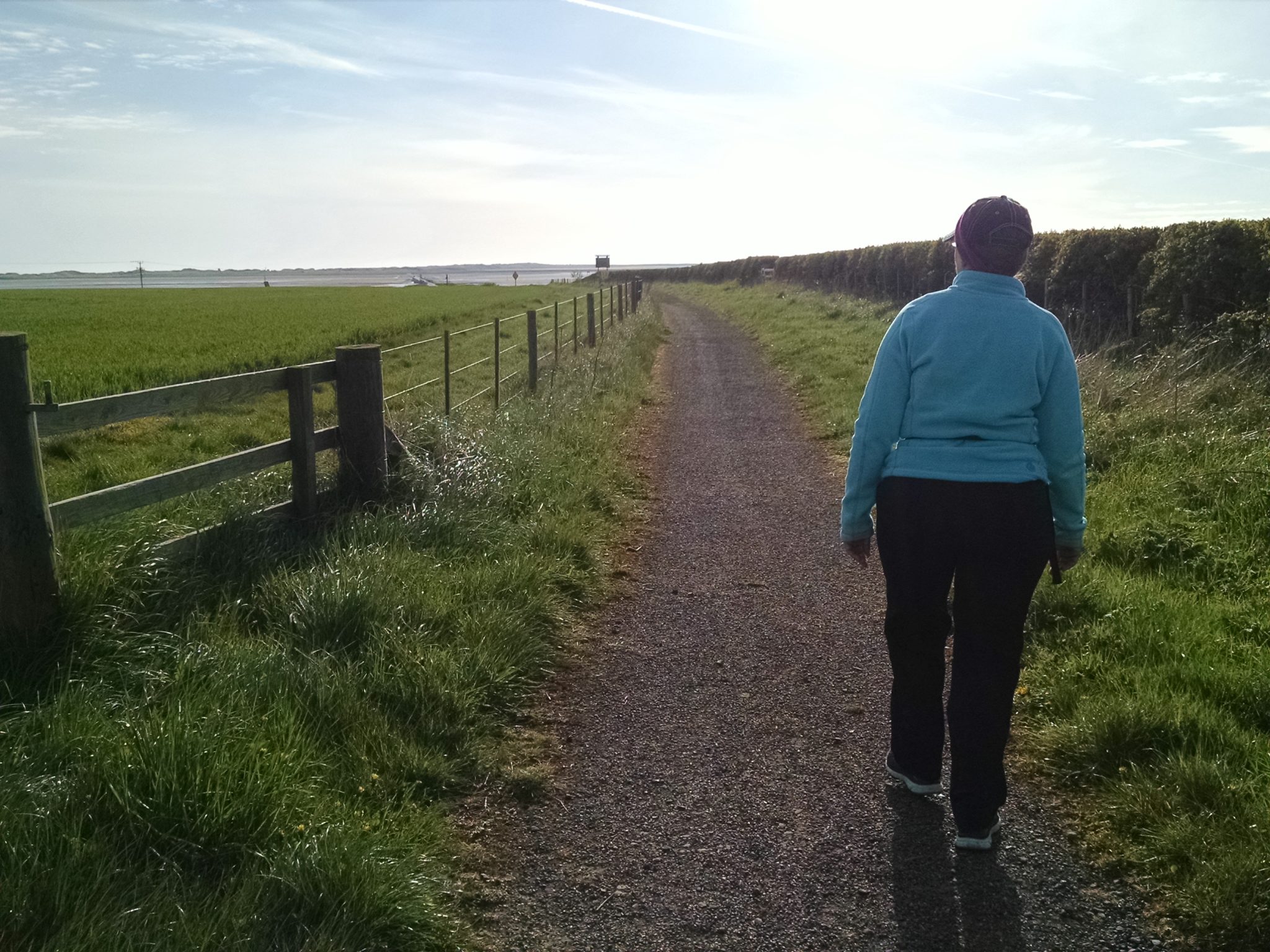


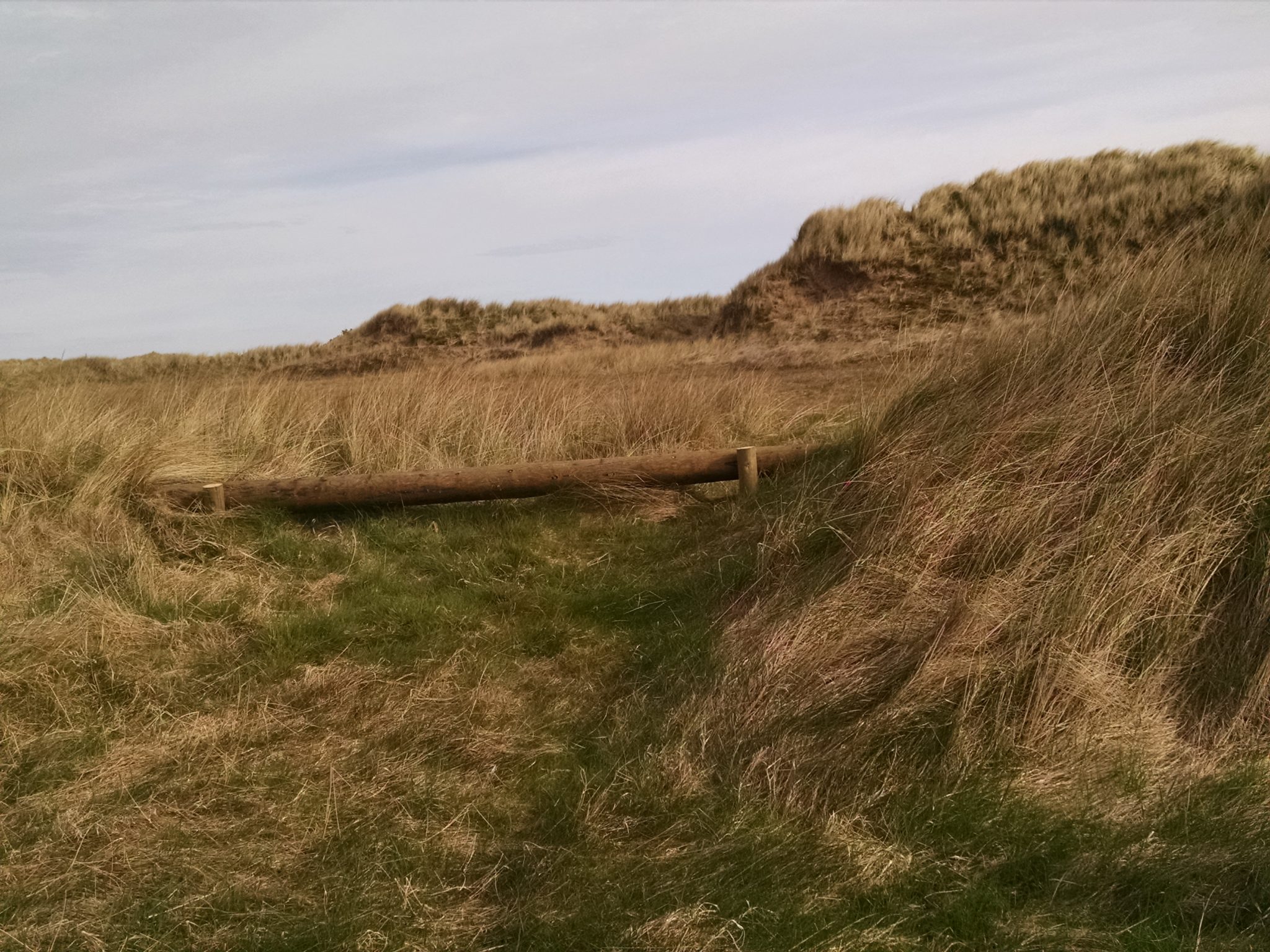
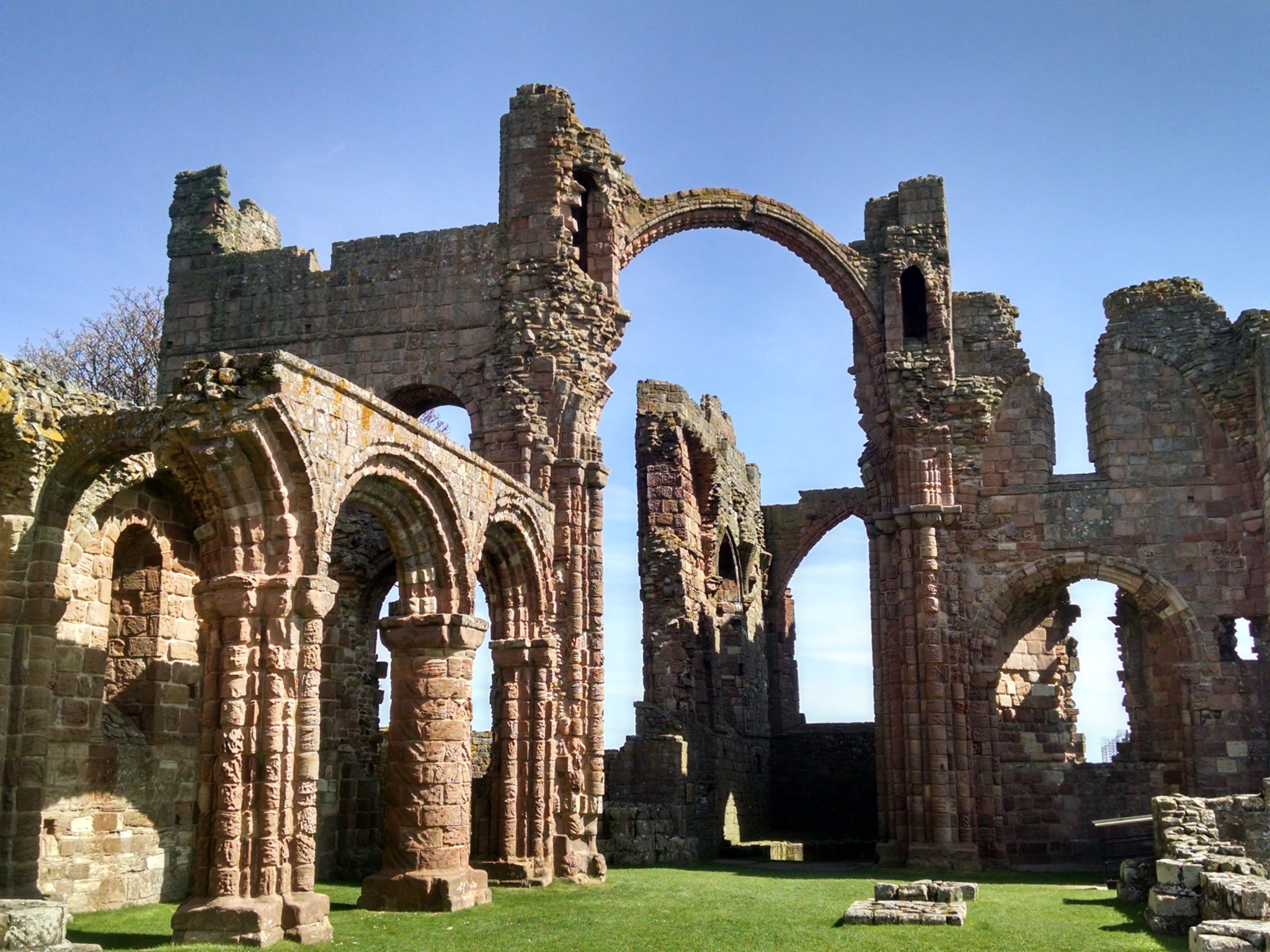
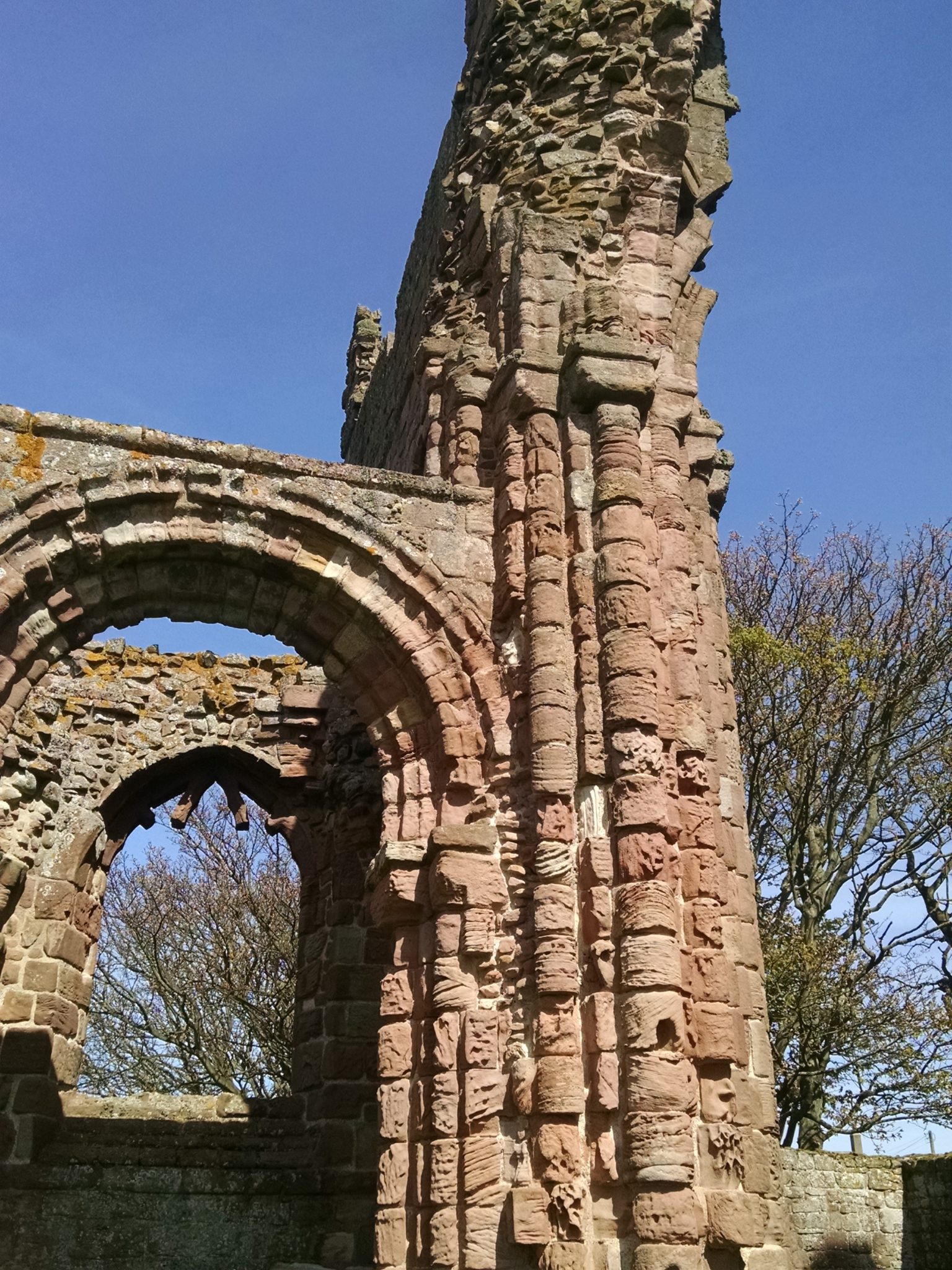

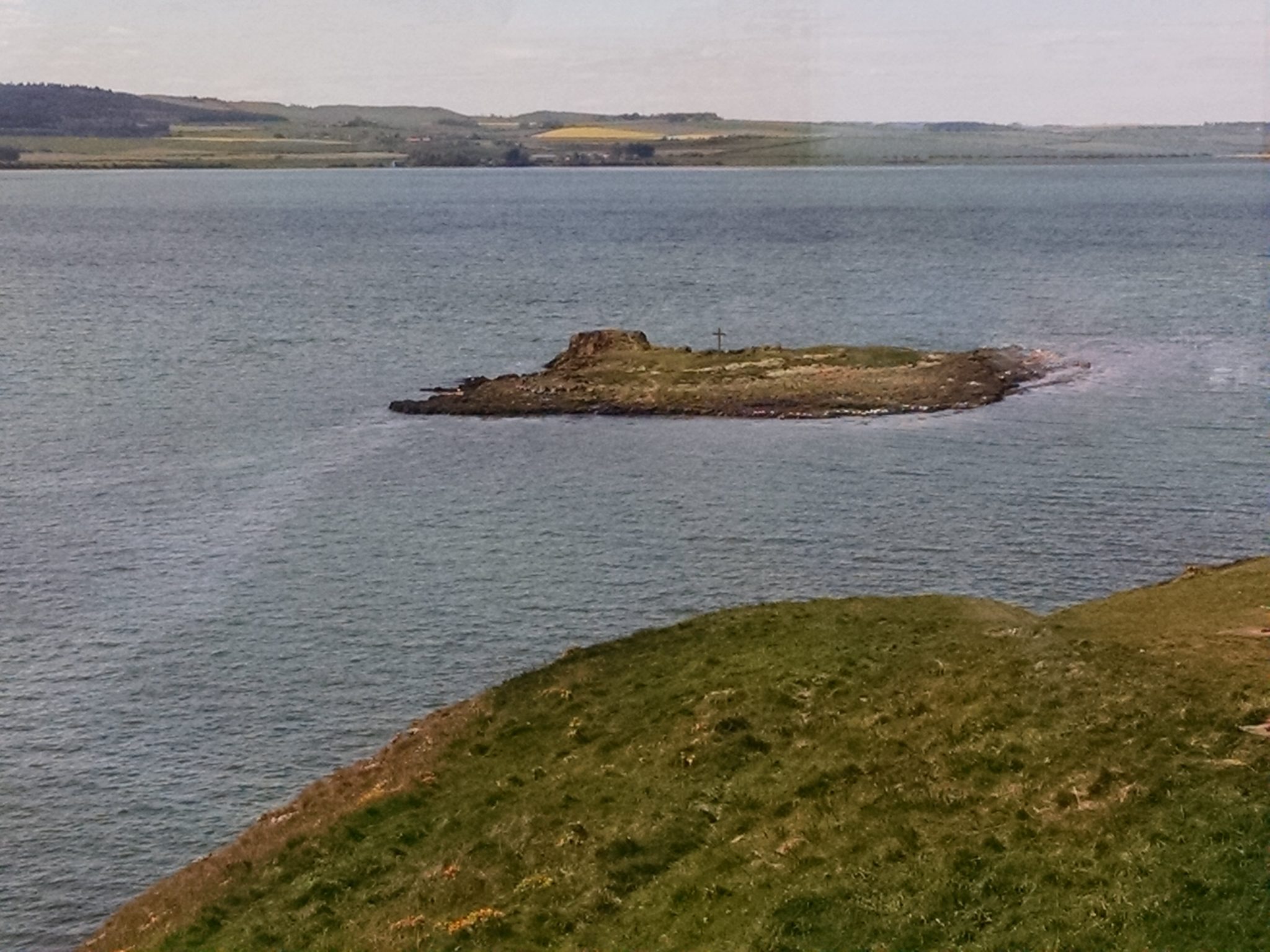
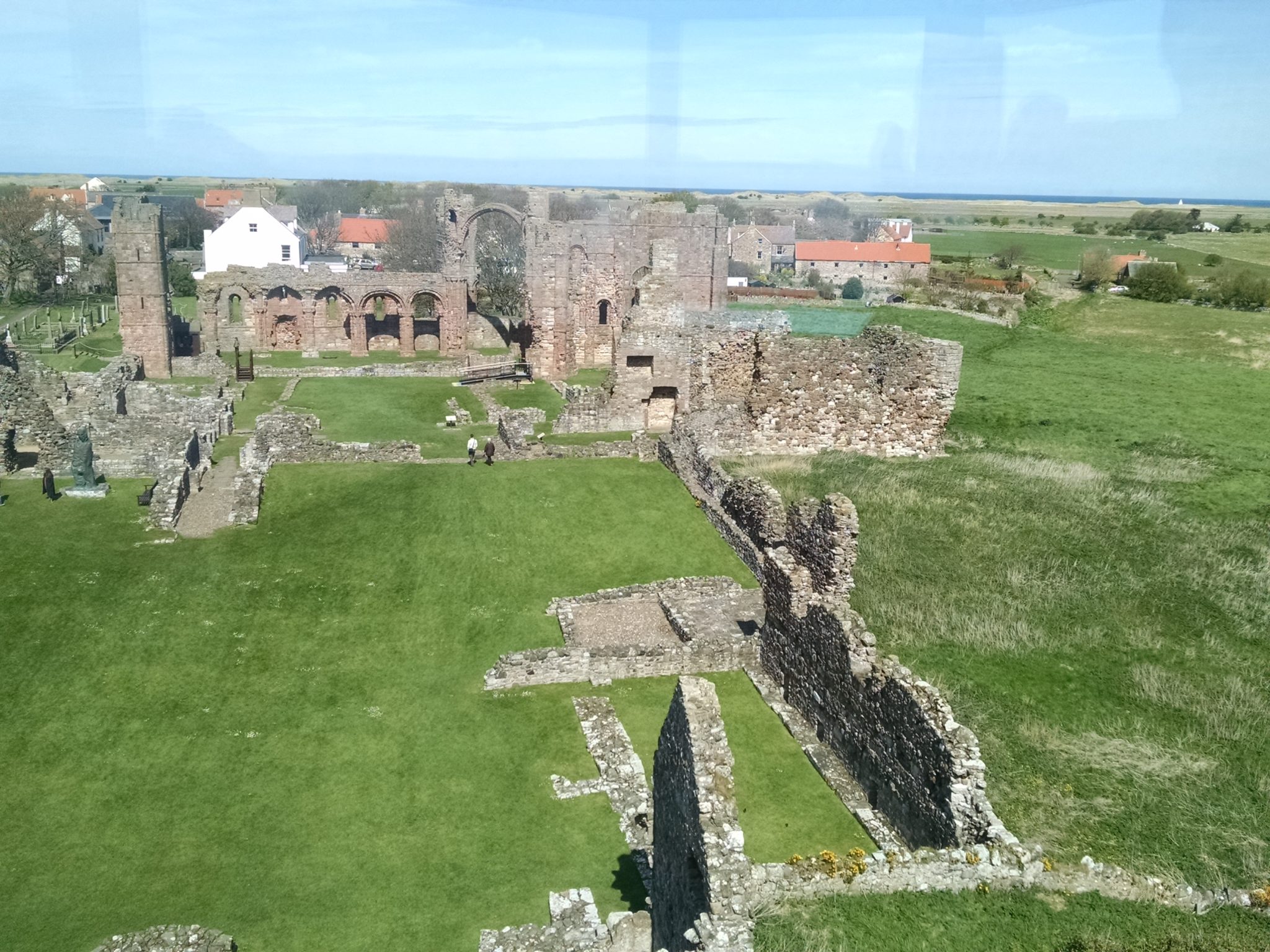
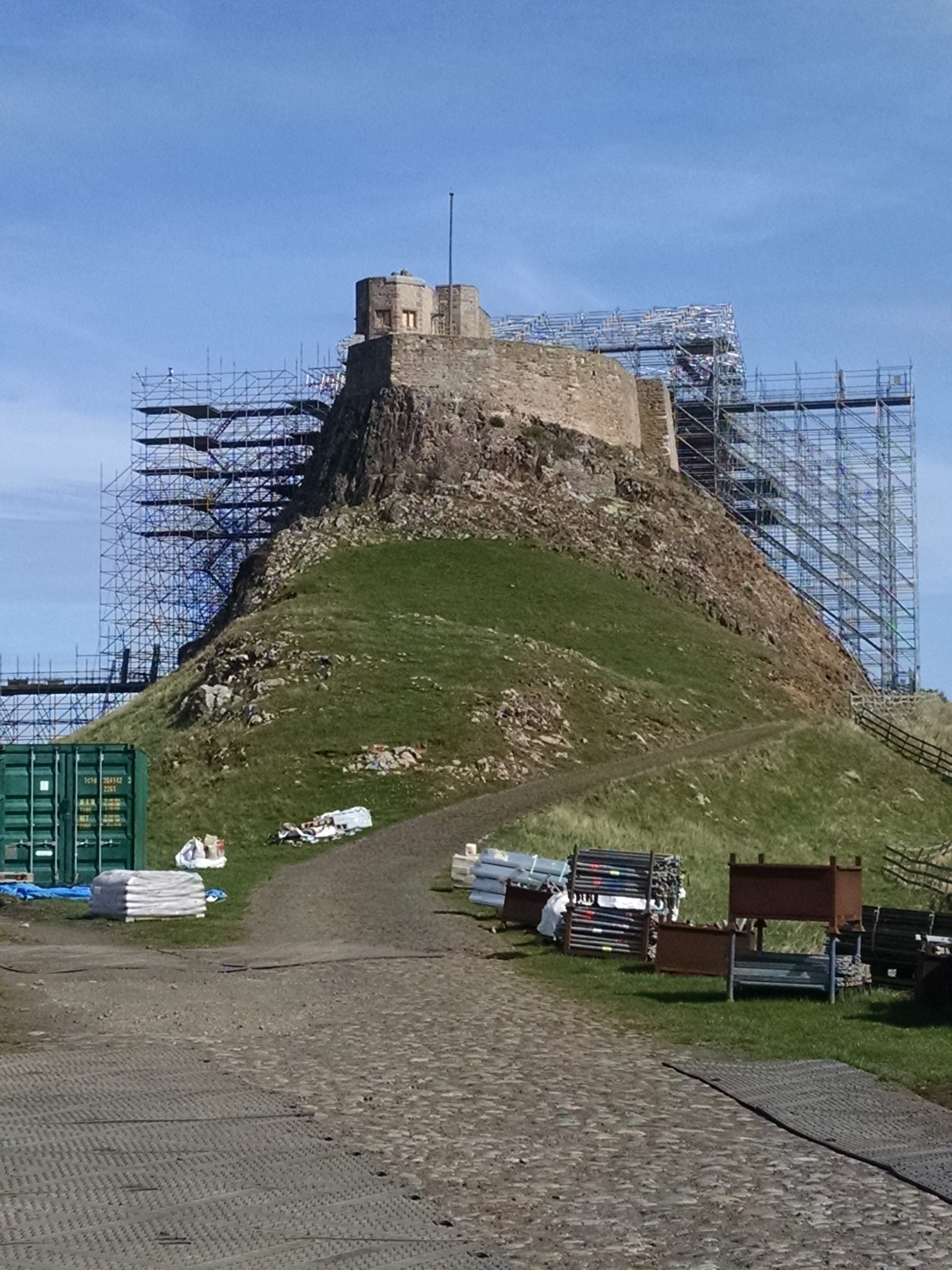
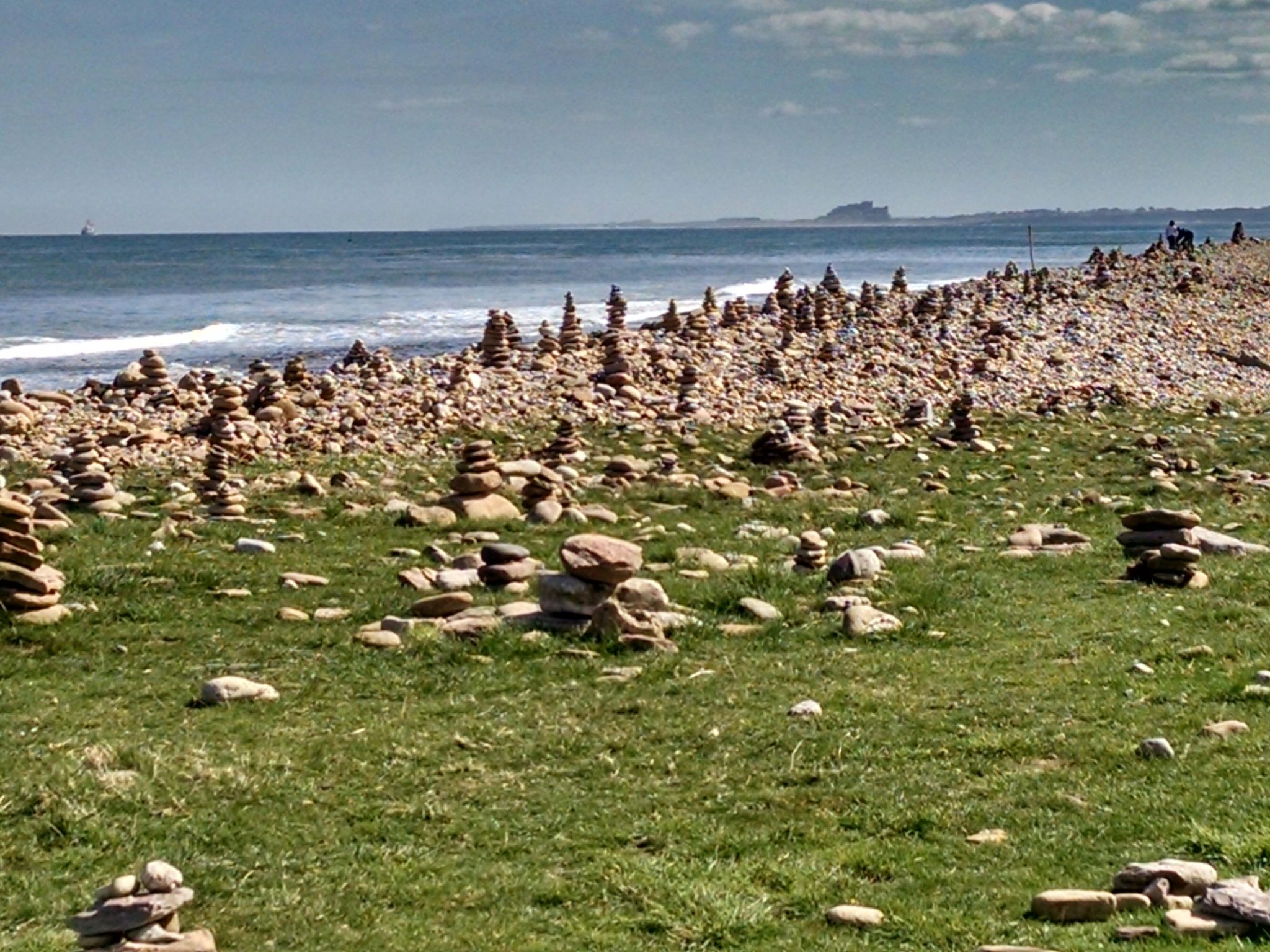
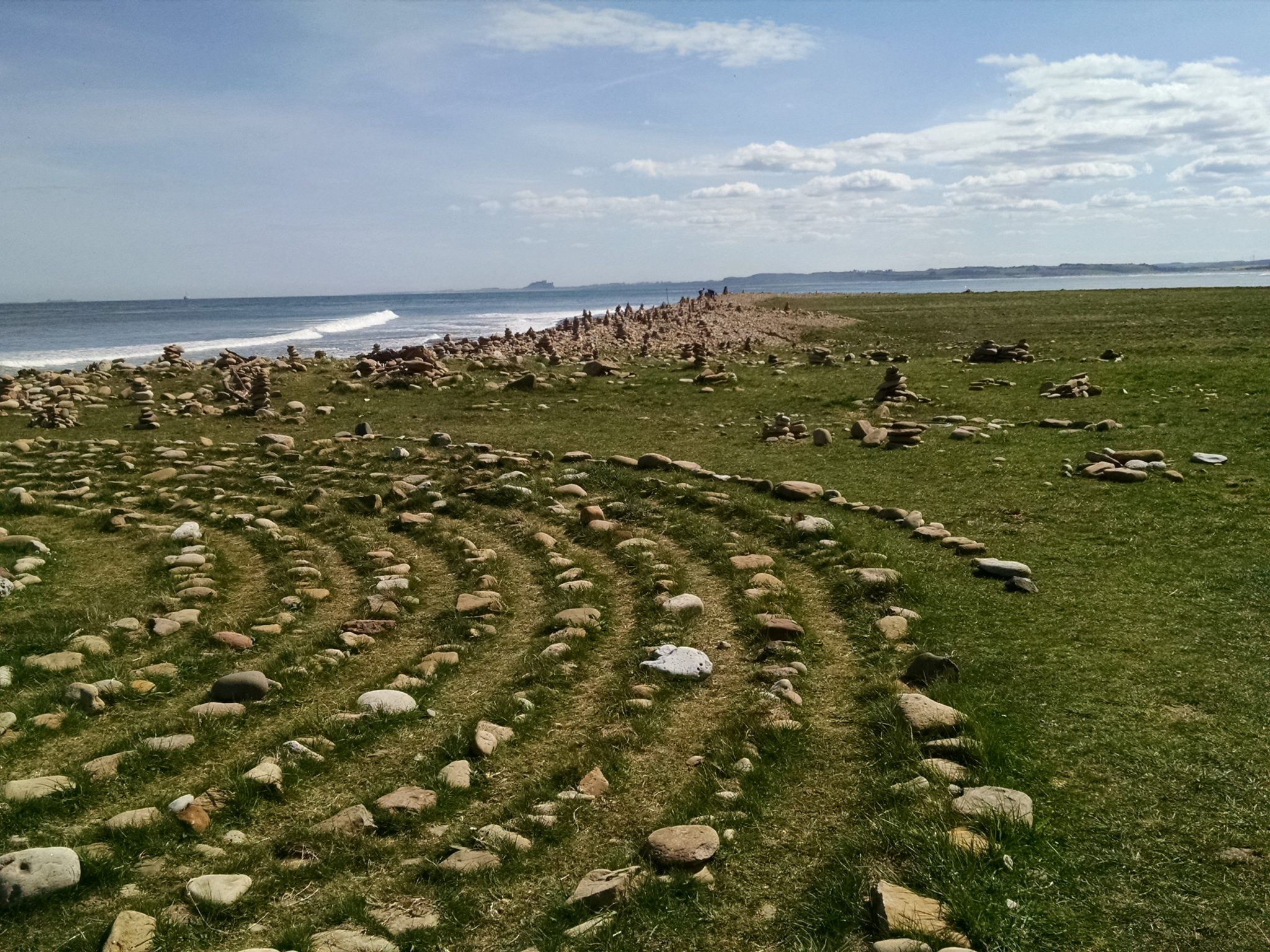
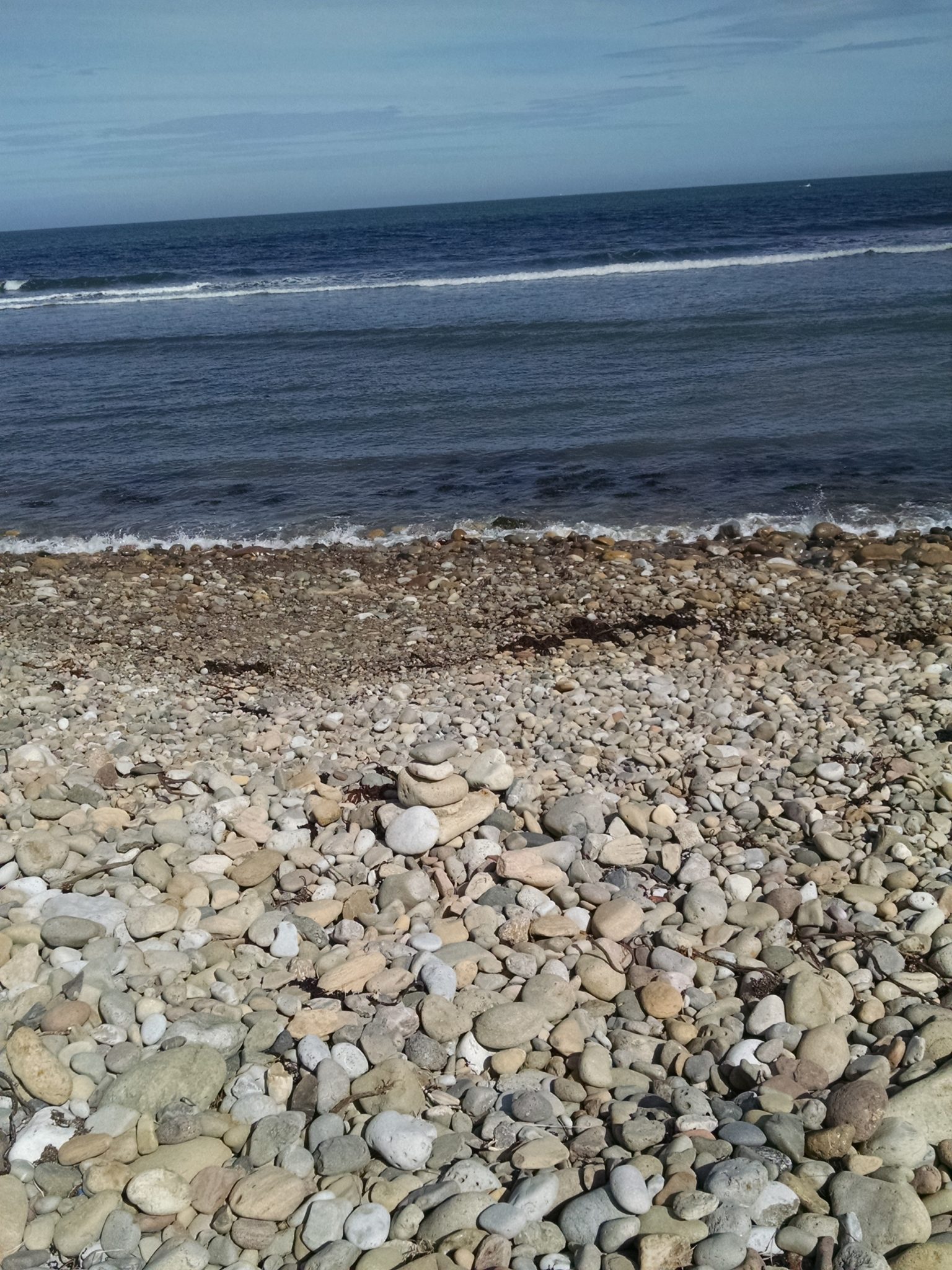
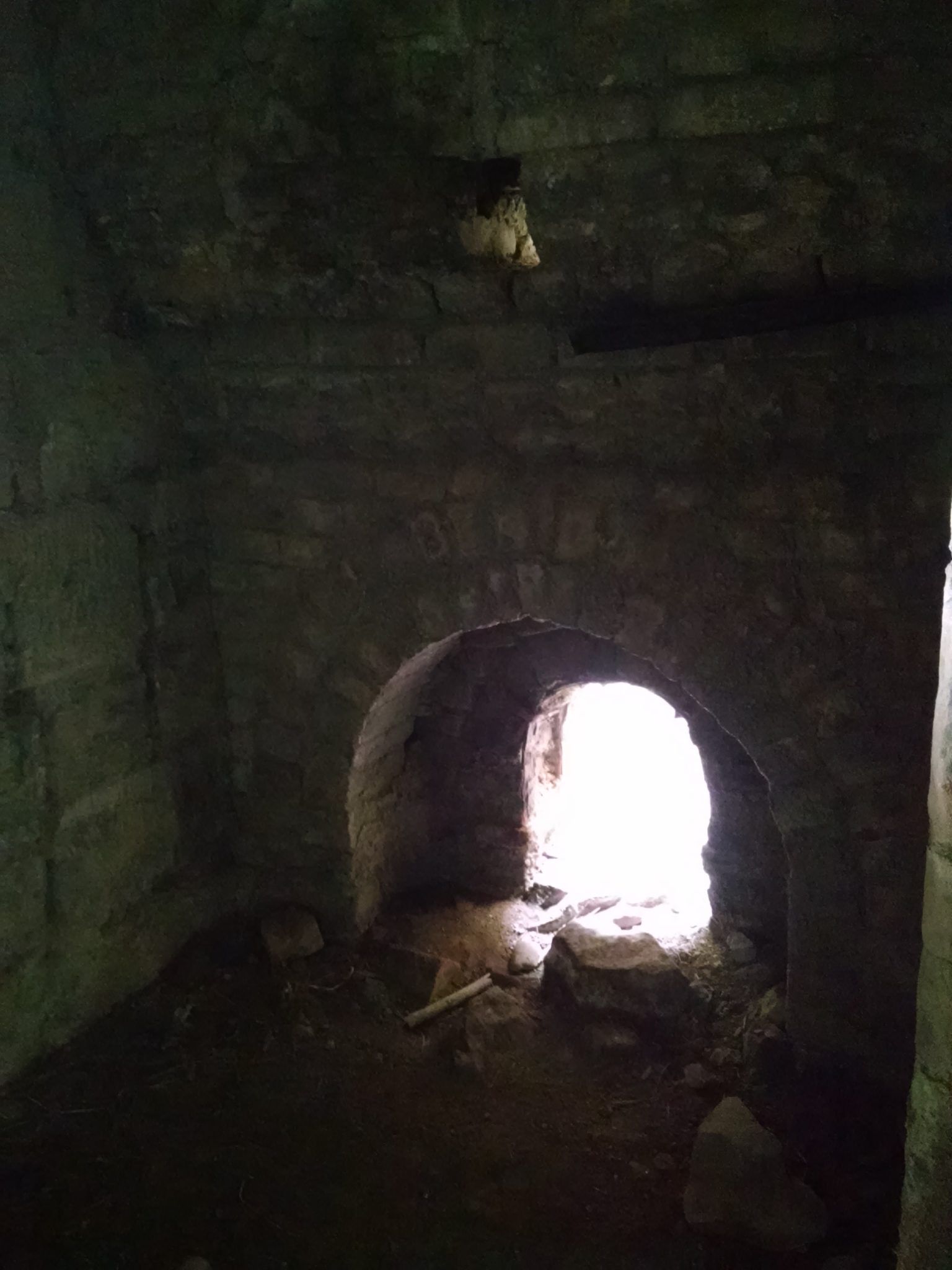
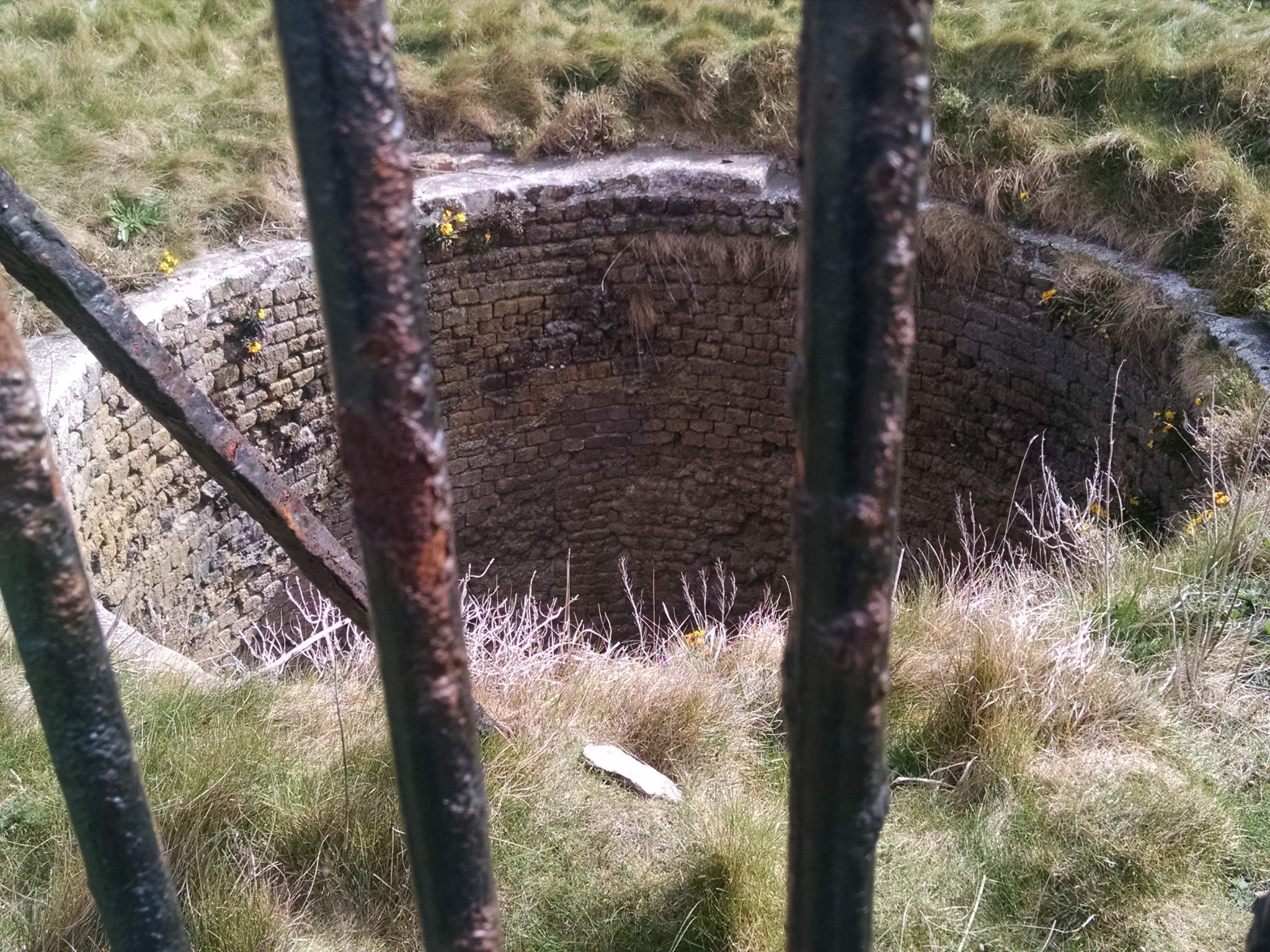
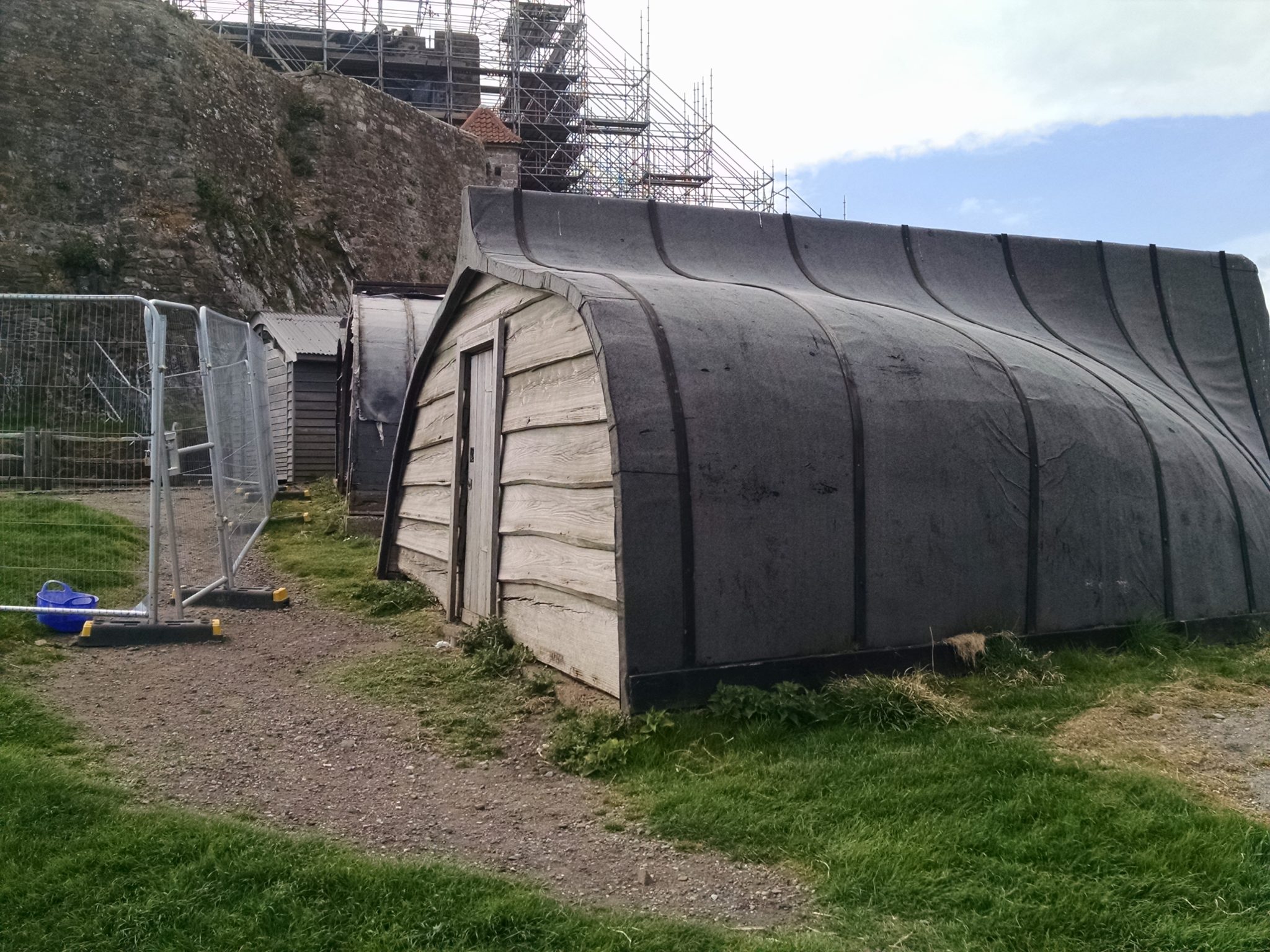
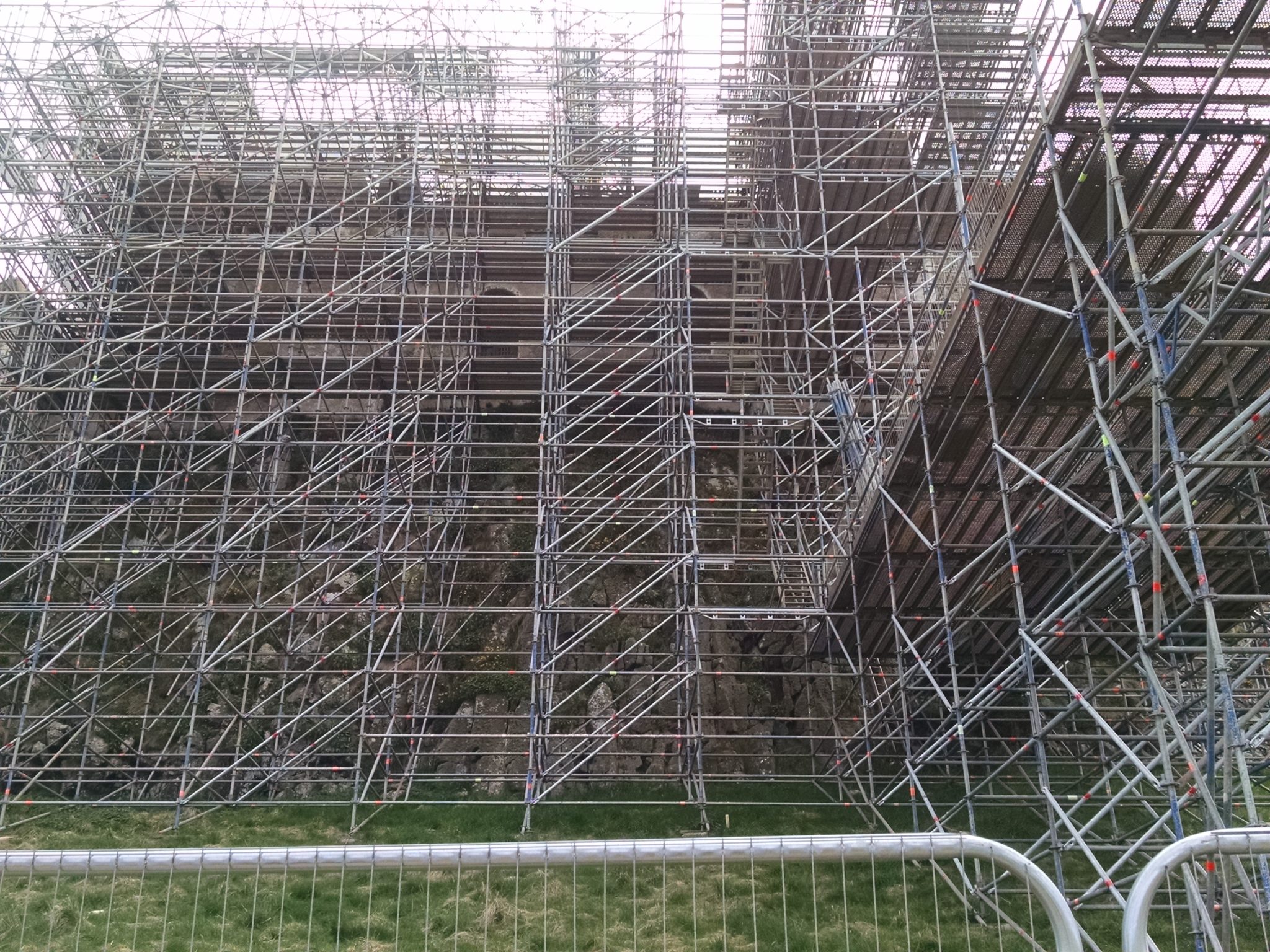
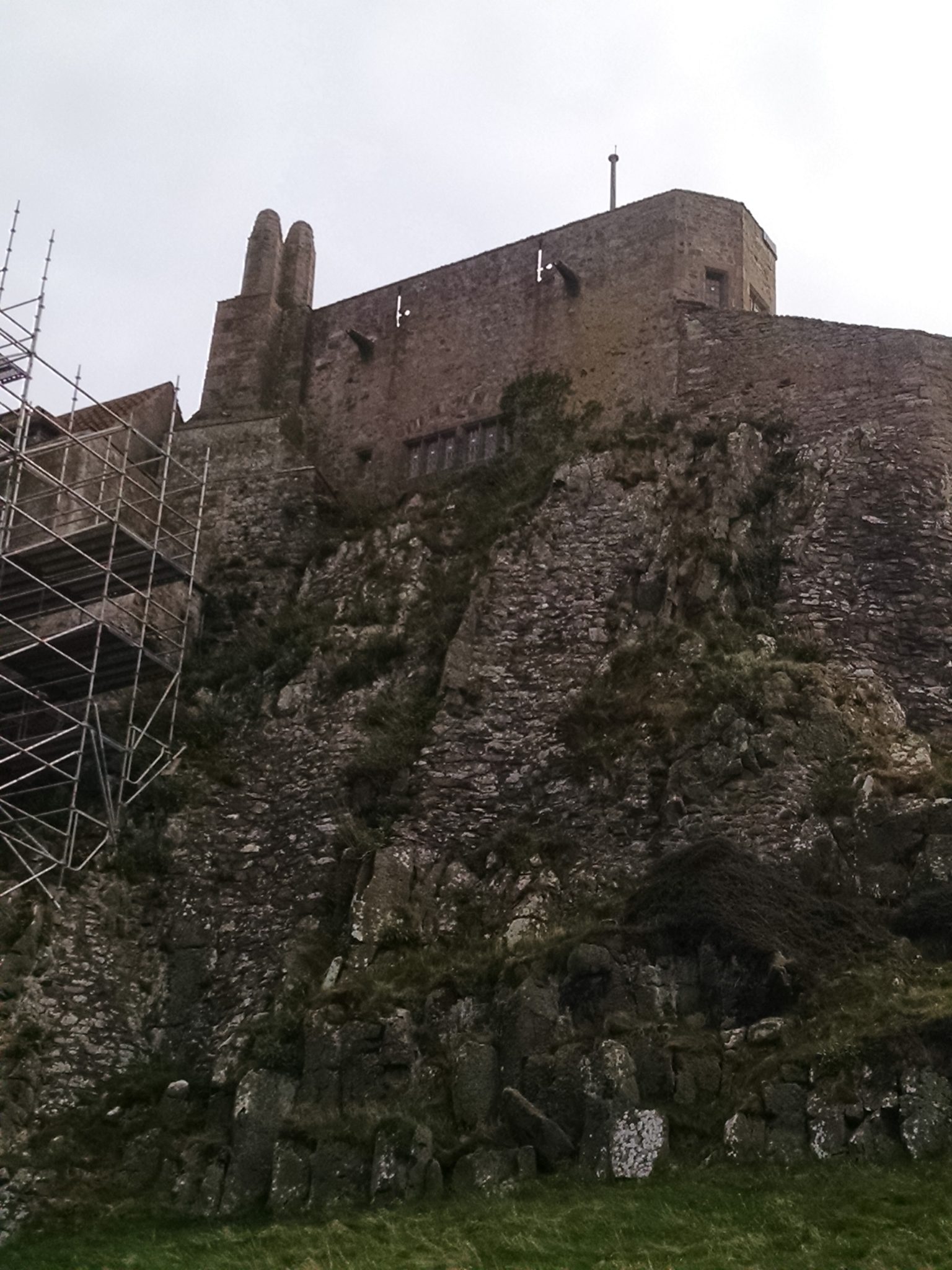
Wow, Jim. That’s beautiful!